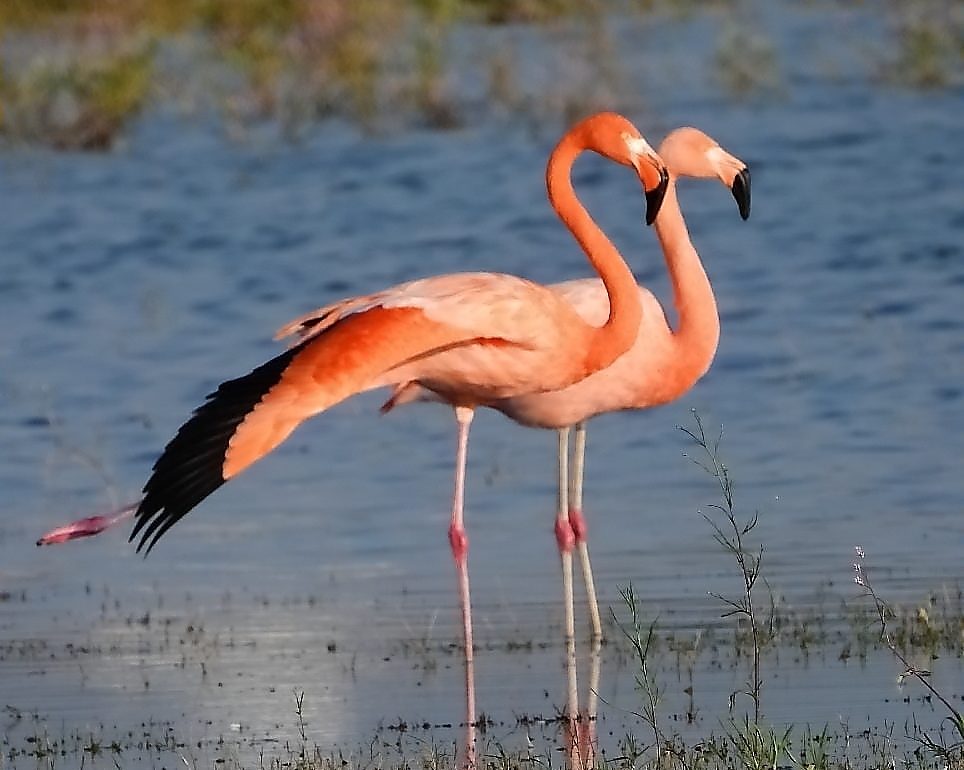
Back in 2016 one very unexpected bird appeared in the Mexican highlands: an American Flamingo. It took up residence for part of each year in the Parque Metropolitano of the city of León, Guanajuato, to the northeast of Guadalajara and well northwest of Mexico City. This is an urban site with a good number of birders, so it is very likely that whenever it was not reported there for a few months, it was because they it had moved elsewhere.
In 2019, this lone American Flamingo found a friend: a Chilean Flamingo. Ever since then, the two birds would show up during the winter months in the Metropolitan Park, always together. But they have not been seen there since May of 2023. And where they go in the summer months, nobody knows.
American Flamingos do occur naturally in Mexico, but only on the Yucatán peninsula in the country’s extreme southwest. And Chilean Flamingos should be found, well, in Chile, as well as much of southwestern South America. So both birds are assumed by many to be escapees from a zoo or a private collection somewhere. And yet, they seem to have done quite well in their unnatural home. (The same can be said for an American Flamingo and (Eurasian) Great Flamingo pair that have lived for many years in the remnant Texcoco marshes near Mexico City’s airport.)
(I should also mention that the male American Flamingo and female Chilean Flamingo were briefly joined by an equally improbable male Chilean Flamingo in the fall of 2020 and the spring of 2021, but the male has not appeared since then. Life is strange.)
I have been hearing about Leon’s famous flamingos for years, now. But I had never seen them, as I have not had the opportunity to travel to that city in recent years. (Even with recently improved freeways, it is still a two and a half hour trip from my home in Morelia.)
But this past Monday, March 25th, I took my three biologist birding buddies up to what currently remains of Lake Cuitzeo, to show them a spot where our micro-endemic Black-polled Yellowthroat has found refuge as much of the lake and its reedbeds have dried up in our current drought. The Yellowthroats are astonishingly abundant there still; at one point, my friend Nacho held out a finger jokingly to suggest that one particularly bold individual might want to perch there.
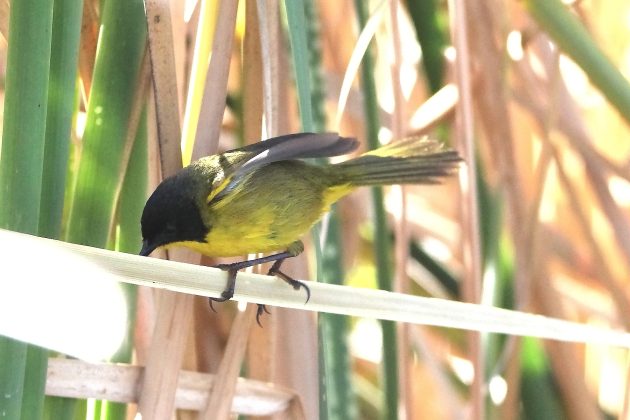
And here he is.
Jonathan was very interested in seeing more shorebirds, and I knew just the nearby spot. We headed there after getting our fill of Yellowthroats, both Common and Black-polled. I have noticed that my biologist friends are much more conscientious about counting birds present, but also come up with much larger numbers than I do. This time, they counted 3,000 Northern Shovelers, 1,000 Green-winged Teals, 2,800 American Avocets, 2,150 Stilt Sandpipers, 820 Long-billed Dowitchers, 1,000 Least Sandpipers, 500 Western Sandpipers, and 150 American White Pelicans, along with lesser numbers for 30 other species. (After birding and passing through a large number of habitats, our total for the day was 109 species.)
So there we were, taking in this spectacle, when suddenly birding buddy #3 called out “Flamingos! Flamingos!” Since Jorge is from Cuba, where these birds are relatively common, we all believed him. (The fact that he is an ornithologist gave him extra street cred.) We all turned to the west, and there they were, perhaps a half kilometer (1/3 mile) away. As they flew, a large group of Avocets took flight around them.
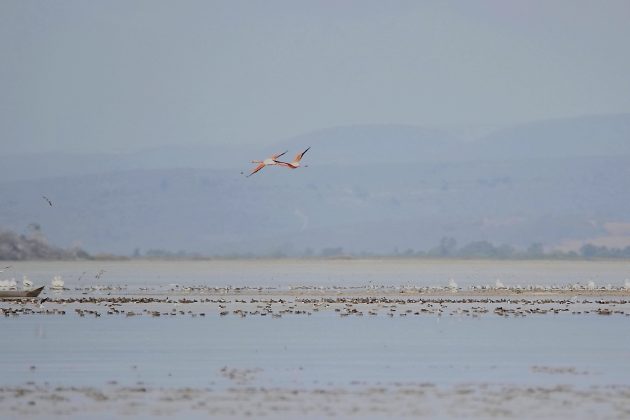
.
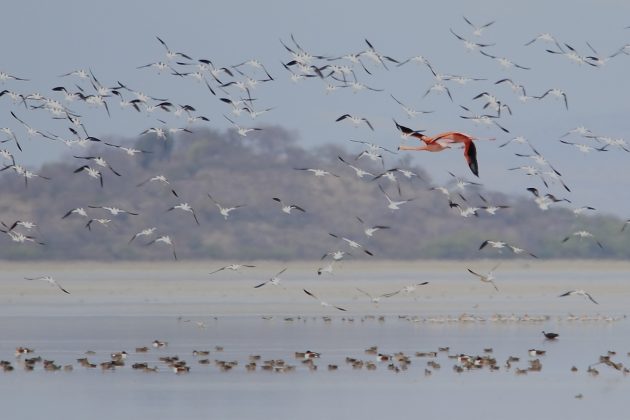
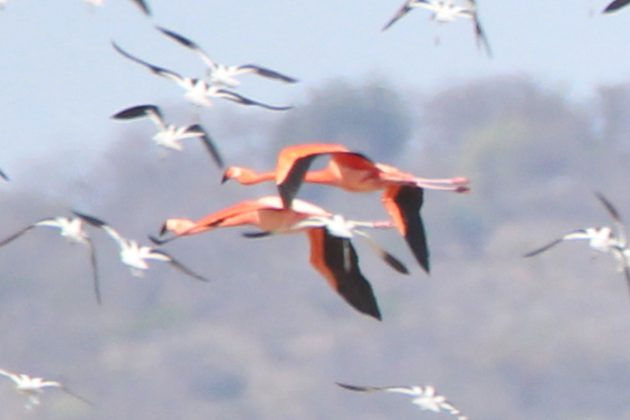
The closeup above is just good enough to show the bill pattern of a Chilean Flamingo on the lower bird, and the bill pattern with less black, of an American Flamingo. These two birds are almost certainly the same Flamingos as have been seen for years in León. Our contacts in that city confirmed thie theory, and were very happy indeed to hear that their birds are alive and well.
Of course, when a group sees 109 species, there are many highlights for the day. This time, there was the White-throated Flycatcher, the rarest of our resident Empidonax Flycatchers. (If you don’t know about this devilish group, consider yourself fortunate.)
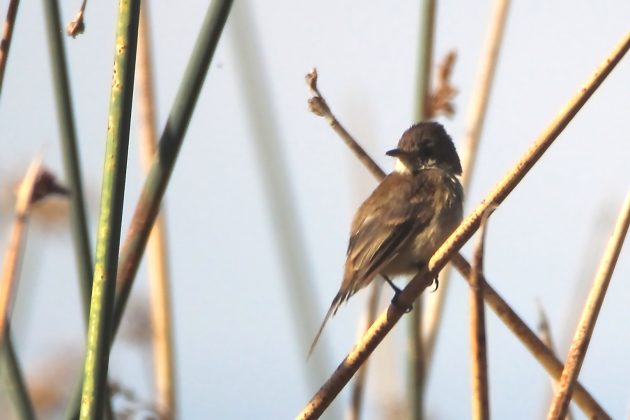
Also Verdins, which eBird still does not accept as a resident within the borders of Michoacán. Now I have two more witnesses backing me up.
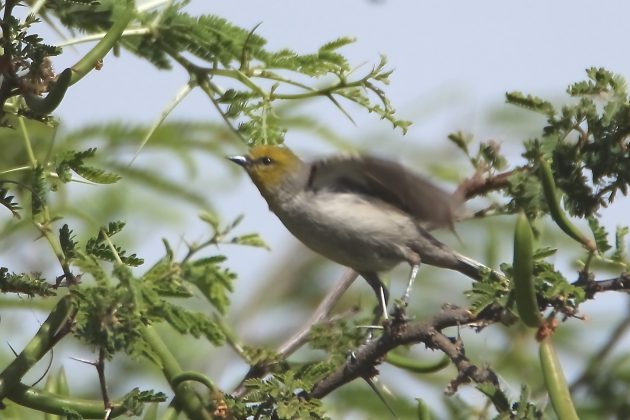
Marsh Wrens inevitably accompany Common and Black-polled Yellowthroats.
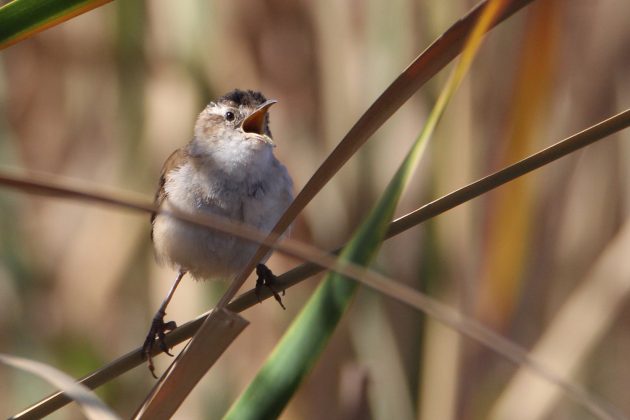
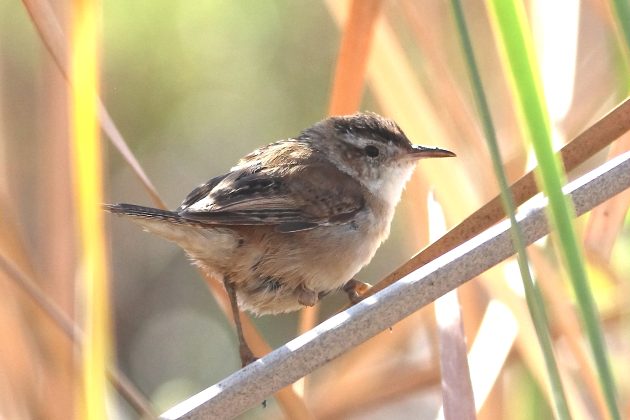
And here’s one of those Common Yellowthroats, which inevitable accompany those Marsh Wrens. Like the Black-polled Yellowthroats, these two species have been reduced to such a small part of the lake that you can almost reach out and touch them.
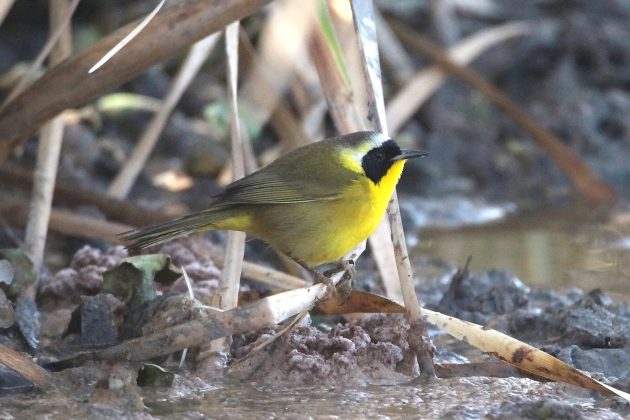
The cherry on my personal birding cake, along with those Flamingos, was a Virginia Rail, which was a new Michoacán species for me. I did see it, I really did, but only Ignacio Torres achieved photos. So this beautiful shot is his:
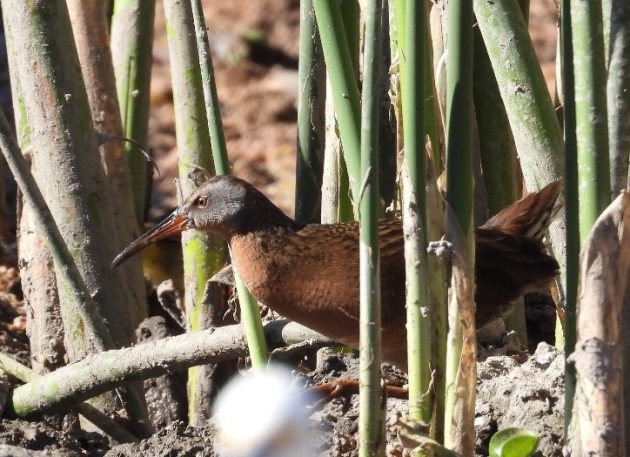
Finally, on this outing I saw my first European Starlings for central Mexico. They may be beautiful birds, but this is one “Michoa-lifer” about which I have decidedly mixed feelings.
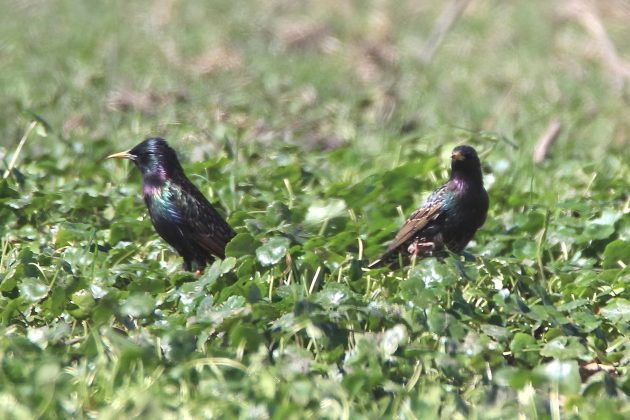
Note: the photo at the top of this post is also not mine; it is by Mauricio Mena and was taken at a much closer distance, of the same two birds, in the city of León.


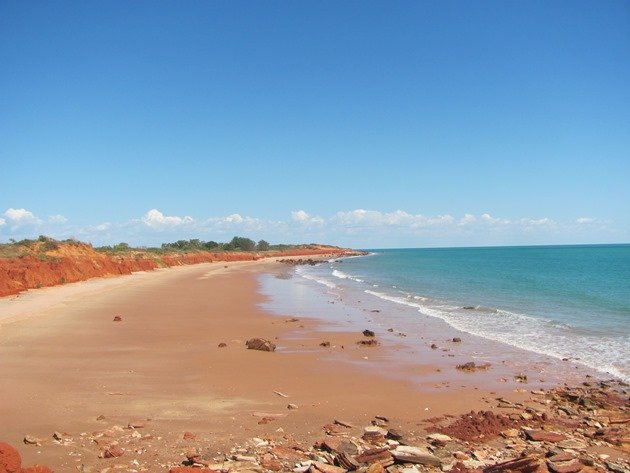

 New writers welcome – please contact us for details.
New writers welcome – please contact us for details.

















Flamingos are long-distance migrants and popular captive birds – always tricky to rule out a lost wanderer. The Chilean one seems too far off to be a genuine vagrant, but I did not see a ring so… We had a good number of successful breeding attempts of the Eurasian here in Portugal – they usually don’t breed here. I really want to come and visit you, Paul, you’re whetting my appetite! Viva México!
Well, we may beat you to the punch by dropping in on you in Lisbon, on our next annual trip to Algeciras, Spain. Even my non-birder wife likes the idea!
And thanks for the information about flamingos. There are definitely no rings on these birds, which are very well documented. The Leon crowd seems to strongly favor the long-distance migrant theory, for whatever that is worth.